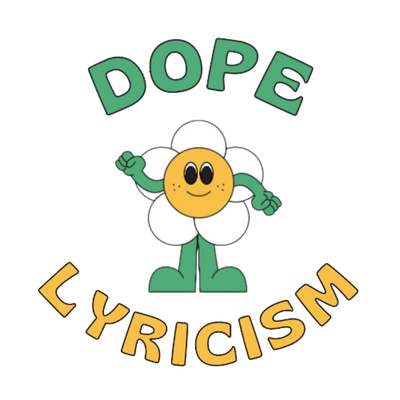[ad_1]
Last week I did something at a classical music concert that I often enjoy at jazz clubs. When the same program came back for the second set, I was left hanging to hear the same program again.
It was the opening night of the inaugural Sonofest!, founded and programmed by jazz pianist and composer Ethan Iverson, at the Soapbox Gallery in Brooklyn through June 23rd. (In addition to hosting audiences in a 60-seat space, the space also offers a live stream of ticketed events.) Iverson was finishing a concert with violinist Miranda Cuxon when he said: I casually pointed out that anyone would want to hear the same song. It may remain in the next live.
Their performance of works for violin and piano by Peter Lieberson, Louise Talma and George Walker was one of the best chamber music shows I’ve heard all season. (Another of his pleasures is Iverson’s playful, lyrical piano sonatas, which he performed alone.) Sometimes the rapport between players develops as the night progresses. So how about we stay together?
This decision immediately paid off, especially in Tarma’s Sonata (1962). A rare piece that combines the harmonic modernism of the mid-20th century with a powerful rhythmic drive. In the first set, Cuxon infused his violin composition with a variety of expressive powers. He carefully shaded the dry moments of his muted playing before rolling out a silvery sound to emphasize the singing qualities embedded in the complex idioms.
Cuxon and Iverson were enviably aligned during the intense passages of the early set—although it felt stiff at times. But then they achieved something else give and take. At certain junctures, she pushed just ahead of his beat, allowing the violin’s almost rushing climactic phrase to decay dramatically over his rhythmically accurate piano. .
Afterwards, Iverson told the audience that he was experiencing a “deep set.” As we sat together, we knew how true he was.
The permission to stay and experience multiple sets is just one aspect of Iverson’s blending of jazz and classical traditions at the new festival. Last Wednesday, as Canada’s wildfires darkened New York’s skies, he joined renowned tenor saxophonist Chris Potter for a predominantly jazz performance, including a poignant inclusion of Jerome Kern’s “Smoke in Your Eyes.” played a standard song. (I videotaped the performance the next day.)
On Thursdays, you’ll hear multiple sets from first-call jazz pianist Aaron Deal. He has also performed the music of Gershwin in the symphony orchestra (and also the music of Philip Glass on recordings). Other nights tend to favor more traditional in-house dining. But it’s rarely too traditional. On Tuesday, vocalist Judith Berkson, who sings an adaptation of Schumann and her own electroacoustic work, brings her visionary practice to the soapbox.
In an interview between sets last week, Iverson explained his festival philosophy. And I think we should all love it all. I’m trying to dig really deep. “
After stating that the composers who participated in the program with Cuxon were all American, Iverson said, “Walker and Talma have syncopation,” and in the latter case, the degree of rhythmic upsurge is similar to Harlem Stride’s. He added that it reminded him of the piano legend. James P. Johnson.
Coincidentally, Johnson made headlines with Iverson’s Piano Sonata, which premiered last year at Boston’s New England Conservatory, where he teaches.
Although the piece has a sonata-like structure modeled after Haydn and other classical ancestors, the low rhythmic bursts in the first movement are described in the score as “James P. Johnson-esque”. And this is not the only way this sonata reflects the world of jazz. After briefly listening to Mozart’s melody in the second movement, Iverson enjoys a soul marked as “Bobby Timmons-esque” with descending notes reminiscent of his jazz tradition.
This is as informative as “Concerto to Scale,” another of Iverson’s charming classics, which premiered with the American Composers Orchestra in 2018. But to its credit, this sonata is less joking, and therefore more safely able to deal with the issue. Layered source material. To my ears, this is another breakthrough in his approach to full musical notation.
In both cases, playing this sonata last week, Iverson plunged into a crunchy chromatic figure of himself with a ferocity unseen in the video of the New England Conservatory premiere, but then “I was a little nervous,” he said.
But at Soapbox, he said, playing a Tarma piece before the sonata “certainly warmed me up.” But he’s always confident in the work, and has reworked and recorded it for its next release on the Blue Note label, due in 2024.
Concerning the spirit of the sonata, he said: “I think when people who don’t swim in the ocean on a regular basis do formal composition, they’re often too serious. I really wish they were more naughty.”
“I feel like James P is with me,” he added. “I feel Errol Garner. And I feel Ralph Shapey.”
The words Iverson uses when he talks about premieres of his upcoming compositions (including more sonatas and Ellington’s orchestral arrangements) are fun to repeat each time he talks about the balance of Sonofest. programming. In both cases he is looking for new paths. And for Iverson, all routes run within what he calls “a very American phenomenon.”
Before returning to the stage for the second set last week, he said: “It’s not happening in Germany or England. There’s still something about all this that I really like: I’m playing American composers. Scott Joplin is one of them.” Henry Mancini is one of them.It’s all there and it’s our language.If you really love everything, there’s still incredible room to find a way.”
[ad_2]
Source link


